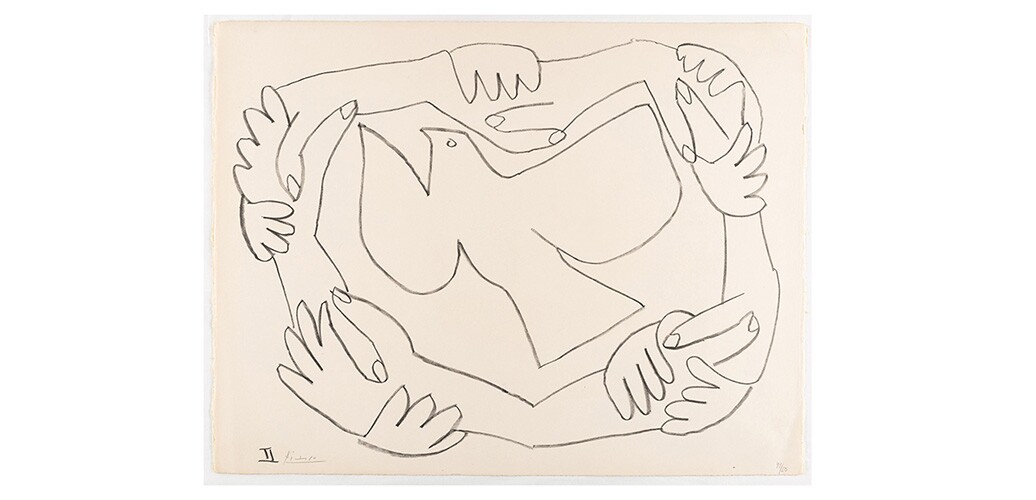One graceful dove ascends, surrounded by a circle of clasped hands. Hand over hand, this wreath of connectedness creates a unified ring, lending the bird a sense of protection and suggesting unity.
The dove is a symbol of the Holy Spirit in Christianity. Artists since the earliest formation of the faith rely on this serene bird to visually represent this aspect of the Holy Trinity. Old Testament Scripture and tradition, including the story of Noah and the flood, present the dove as a symbol of new beginnings, creation and renewal.
The dove is also a widely recognized symbol of peace, and a recurring motif in Pablo Picasso’s work. Les Mains Liées means tied or linked hands in French. Picasso’s first artwork featuring a dove, titled La Colombe from 1949, became widely recognized as the poster illustration for the Paris Peace Conference. It then became an emblem for the Peace Movement in the aftermath of World War II. Picasso continued to explore the symbol of the dove for the remainder of his career. His outlook and involvement in political activism were awakened during the Spanish Civil War (1936-1939), where he became horrified by witnessing war and armed conflict.
Throughout his career, Picasso created art that highlighted the devastating impact of conflict. Picasso’s influence and importance in the art world is immense and long-lasting. More recently, his tumultuous personal life has garnered attention. Perhaps his greatest legacy, however, is as a vocal advocate and tireless champion for peace.
Picasso’s elegant composition here offers a forceful but delicate message of aspirational hope. The minimal use of line conveys soaring and swooping, taking flight through the air and on the page, as the dove climbs upward.
Peace is not merely an abstract concept—it is an activity, hard-won and hard-wrought, requiring the collective spirit and continual cooperation of humanity for one another. This pursuit is as vital as the outcome it seeks. Unity and hope are as intertwined as these joined hands, working in concert to achieve the lofty aspiration of peace, which itself inspires transformation and love.
Hope unites us like no other idea, and art is a powerful source of hope, unity and peace. The linked hands surrounding the bird of peace here speak to these ideas of mutual aid and harmony between people. It is beautifully fitting that the dove has remained a steadfast symbol of peace and the Holy Spirit, given Jesus’ unifying love and message of peace for humanity.
Joanna Reiling Lindell is the director and curator of the





